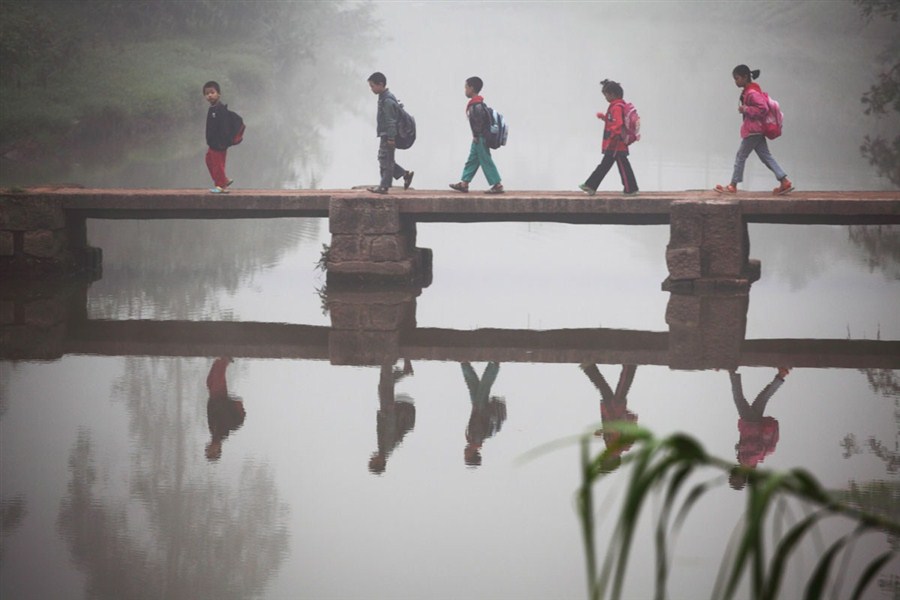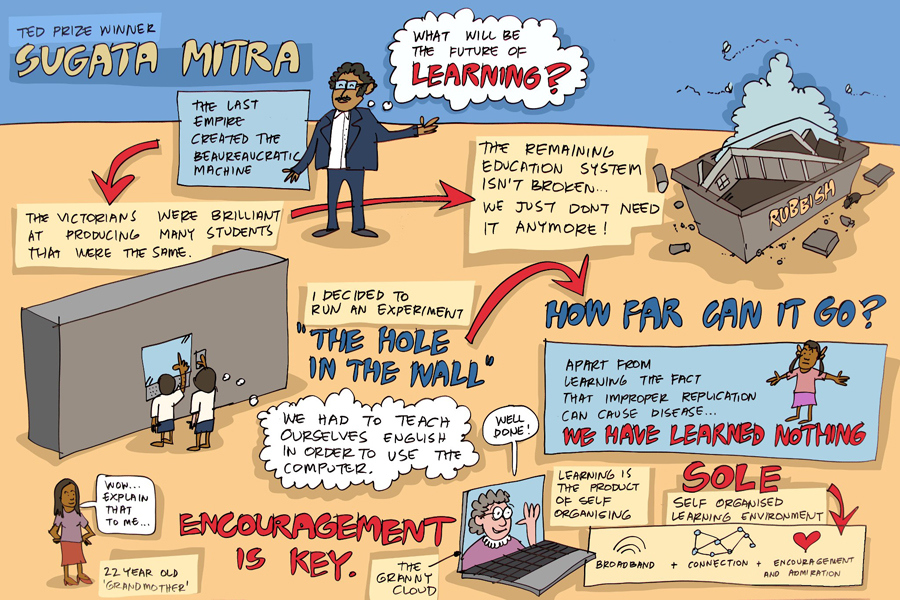Predicting the future ‘school’…and SOLEs…

In one of our last sessions Prof Mitra shared with us the idea of Projection, Prediction, Prophecy, Fantasy when it comes to thinking about education and learning in the future.
We eventually met on Thursday and talked about so much! Typical SOLE (I imagine) we scrapped the 4 group idea and moved into 1 big group. Although it was a slow start we had interesting conversations.
We’re looking at 20 years ahead in the future and I think we’re in between predication and prophecy (only somewhat). 20 years isn’t that far away and I think most of the group thought that schools were very likely to look the same so much so that learning would take part in buildings and classrooms.
We looked at a school which would have a ‘community administration’ where parents would play a role in the running of the ‘school’ along with professionals, teachers and government (as funders and providers of infrastructure).
Classrooms would be multipurpose where students could sit, stand, lie down in a way that helped them to learn comfortably. Smart walls and sustainable spaces such as gardens and farms would feature in our open space, campus style ‘school’.
The role of the teacher is fluid as a facilitator/mentor/councillor depending on the environment and needs of the students. Teaching would be customised with continuous ‘invisible’ assessment and classes would be flexible in terms of age and ability. Peer learning could feature as part of learning opportunities and elements of this Sophisticated Virtual Learning Environment (SVLE) (Credit to @DanHowardGames).
The curriculum will probably look the same as it does now incorporating literacy/numeracy/life and critical thinking skills, but will be fluid enough and have an element of choice involved for students. We also thought an ‘Introduction to Learning’ might be a good starter at the beginning of term. A portfolio detailing leraning could be used as evidence of continuous learning throughout the years.
Of course this is totally made up and is only one s idea of what the future of learning could look like!

I’ve been reading a few blogs and there are some deep criticisms of Prof Mita’s work on SOLEs. I’m probably a bit biased already because I really like SOLEs and see their value from my own professional experiences with children and young people in informal environments like youth work.
I think there’s a misconception somewhere that SOLEs are an attempt to replace the current learning and schooling system but I don’t see it that way. I see it as an opportunity to enhance learning experiences and/or provide an alternative.
I’ve seen many elements of SOLEs in youth and community work settings. It may be different with primary school aged children but I’m openly uncomfortable with not having any structure whatsoever in a SOLE, maybe it’s because I am an ‘adult’ and my learning experiences have led me to want structure but the experiences I’ve had in youth and community work mean that I think a bit of (even a tiny bit) of structure can be helpful and not a hindrance to participants.
Enhancing the role of teaching and learning through the use of technology isn’t a negative. Technology plays a huge part in our lives, even if we don’t like it. Technology may be a key player in developing countries, in areas where there are few opportunities for children to learn.
Even in the UK I don’t see the use of technology in the classroom replacing but enhancing the learning experience.
Maybe I’m to laid back but using harsh words such as ‘damaging’ seems a little over bearing. Of course talking about education brings out the passion in people.
Prof Mitra has a cool and calm persona and deals well with questioning, he has an answer for everything which I can only imagine annoys his critics.
One things for sure is technology, and advancements in it is not going away and there’s a need to have discussions about our teching and learning environments.









